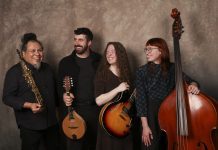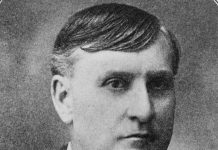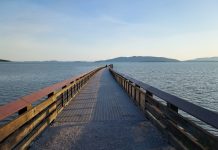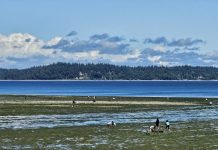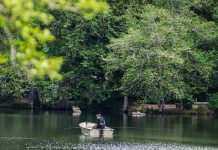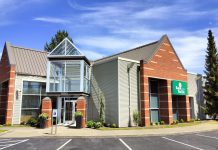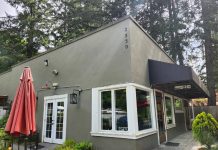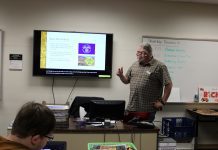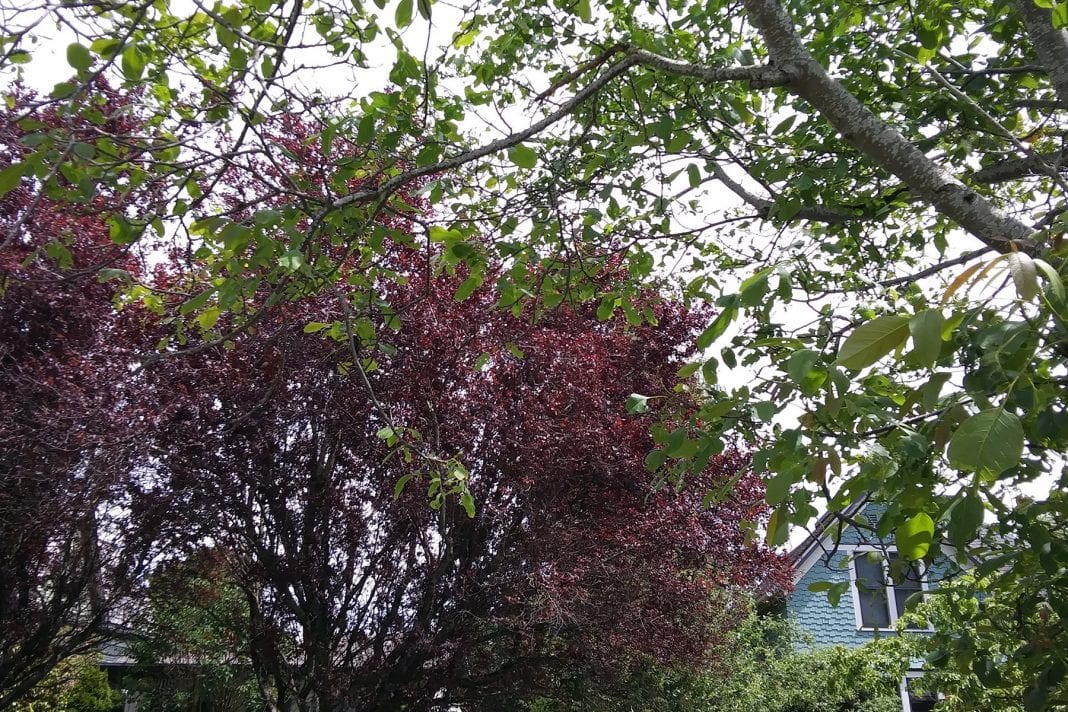We cherish the trees in our yards for their shapes and shade, the birds they house, the winds or noises they may soften, and perhaps how they connect us to past generations. While we grow used to their constant company, being responsible for our trees’ well-being and, well, “manners” is a little like having gigantic unruly teenagers: There might be things happening under the surface you don’t understand—and also—your neighbors might be inconvenienced or outright annoyed.
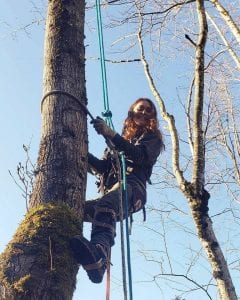
Trained experts can advise on and help with trees of all sizes, and have the equipment and skills to do the job. But of equal importance is their expertise to help predict and head off problems, such as common safety concerns, issues along property boundaries, future unwanted growth patterns, and more.
“Roof damage is a concern, for example,” says Jeff Hodgin of Premier Tree Service. “If limbs are too close, or overhanging, the life of a roof can be significantly decreased from lack of airflow or sunlight causing moss growth.” He once had a roof that was planned to last for 35 years but only made it 17 because of a neighbor’s overhanging trees. “That is just one of many things we help clients solve.”
It might be tempting to want to do it yourself, but when it comes to trees you’ll likely need special tools and safety equipment, as well as some sort of removal strategy. Both of those things require additional costs and contact with others. You’ll also need specific skills. Doing a job incorrectly can cost more money in the long run if a tree is injured, your home value impacted, or a neighbor’s property damaged.
From a physical safety standpoint: Trained professionals are not likely to fall or injure themselves with falling materials, unlike many amateur arborists. So just pay once, know it will all be handled correctly, and stay safe.

Things You Can See
Look at your trees. Are any showing dead patches or branches, leaves that are off-color, or strange gashes or patterns on the bark?
“Check the tops, check the bases, check the trunks,” says Hodgin. “Starting at the stump, I’m looking for open holes, rot, splits between trees that are too close together and the wind is trying to push them apart.”
On the trunk: are there woodpecker holes, previous damage that looks like an open sore, or scabs? On the tops, do you see dead hanging limbs or tops that have died?
“Trees with ‘multiple tops’ are always dangerous,” Hodgin says, “because the wind can get a hold of different layers and push harder when blowing, and cracks can develop where the separate tops are trying to rip the tree apart in the wind.”
If trees are leaning toward structures, electrical wires, or play areas, or if major branches are hanging over buildings or over property lines, it’s time to call someone to take a look.
Are trees too close to your house or other features? Roots can hurt foundations, plumbing, sidewalks, watering systems, septic lines, and more. Siding can be damaged by branches within striking range during high winds.
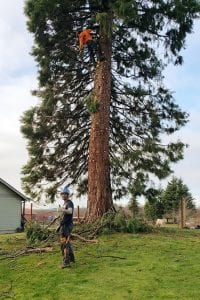
Things You Can’t See
Maybe branches are blocking your view of Bellingham Bay, a lake, Mount Baker, or the sun. Is the canopy so thick that no sky is showing through, making a wind hazard?
“There are also things like pitch falling on cars, interruption of satellite reception, or a need for thinning of bushes so there aren’t visibility issues for safety,” says Hodgin.
Trees need preventative care and maintenance to be a working part of a managed landscape. How to thin or prune for a desired effect, how much height can be cut off without harming the tree (topping, canopy reduction), how to determine if the ground is too compacted, how to know if the tree is nutrient deprived, or what exactly those roots blocking your garden bed likely go to are all subjects for an expert. Early signs of insect infestations or fungus might be things you don’t see, but they will.
Information Saves the Day
Early intervention is right up there with an ounce of prevention when it comes to trees. Having the right knowledge allows you to follow a simple plan—making something that feels huge and unwieldy into a perfectly manageable (and wonderful) asset.

But information can support another relationship on top of the one between you and your tree: the one between you and your neighbors. The “law” when it comes to things growing across property lines isn’t clear. As each case is a little different, the legal precedence is always subjective. But the one thing that can help is establishing knowledge between all parties. Get trained professionals to give an assessment on health, safety, roots, cut-backs, and future potential threats so everyone is starting from the same base awareness and solutions can be reached without legal intervention ever being required.
New Life You ‘Wood’ Feel Good About
“One of the things we try to do if we do have to take a tree—and we do try to be conservative—is to repurpose the wood into other projects like furniture, instruments, floor wood, paneling, chainsaw carving, telephone poles . . . anything more interesting than firewood,” says Hodgin. A lot of wood in local rivers placed to support salmon enhancement activities has been salvaged from tree service work Hodgin has coordinated. “There are also live edge slab counters and tables at local businesses that are just gorgeous.”
Inspired to take care of overhang, canopy thinning, pruning, tree removal, stump removal, replanting, or view enhancement today? Call Jeff Hodgin at 360-815-5608 to line up an experienced crew with all the necessary equipment.
Sponsored





